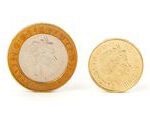Purchasing Gold in an IRA: A Comprehensive Guide for Researchers
Introduction
In today’s complex financial landscape, securing a comfortable retirement is a top priority for many individuals. Traditional investment options like stocks and bonds, while reliable, may not provide the diversification needed to safeguard your retirement funds against economic uncertainties. This is where Individual Retirement Accounts (IRAs) come into play, offering various investment choices, including the often-overlooked but valuable option of purchasing gold within your IRA. In this comprehensive guide, we will delve into the nuances of “Purchasing Gold in an IRA” to help researchers make informed investment decisions for their retirement.
Types of IRAs
A. Traditional IRA vs. Roth IRA
Traditional IRAs offer tax-deferred growth, meaning you don’t pay taxes on your contributions until you withdraw the funds in retirement. In contrast, Roth IRAs use post-tax dollars but offer tax-free withdrawals. Understanding these fundamental differences is crucial when considering gold investments in an IRA.
B. Self-directed IRAs
Self-directed IRAs provide more control over your investments, including the option to include alternative assets like gold. However, they require careful planning and adherence to IRS rules.
C. Eligibility and contribution limits
Familiarize yourself with the eligibility criteria and annual contribution limits imposed by the IRS for each type of IRA to ensure compliance.
The Case for Gold in Your IRA
A. Historical performance of gold as an investment
Gold has maintained its value over centuries, serving as a hedge against economic downturns and inflation. It can bolster the stability of your retirement portfolio.
B. Hedging against economic uncertainty
In times of economic turbulence, gold often outperforms other asset classes, providing a safeguard for your retirement savings.
C. Potential tax advantages
Certain gold investments within an IRA may offer tax benefits, making it a smart addition to your retirement strategy.
Rules and Regulations for Purchasing Gold in an IRA
A. IRS-approved metals for IRA investment
Not all forms of gold are eligible for inclusion in an IRA. Familiarize yourself with IRS-approved metals, including gold coins and bars, to avoid compliance issues.
B. Custodians and depositories
Self-directed IRAs require a custodian and a depository to ensure compliance with IRS regulations. Selecting reputable institutions is paramount to safeguarding your investment.
C. Reporting requirements
Stay abreast of IRS reporting requirements related to your gold investments in an IRA to prevent potential tax penalties.
D. Prohibited transactions and penalties
Understanding what constitutes a prohibited transaction and the associated penalties is vital to preserving the tax-advantaged status of your IRA.
How to Invest in Gold within an IRA
A. Choosing a reputable gold dealer
Select a trustworthy gold dealer experienced in facilitating IRA transactions to ensure a seamless and compliant investment process.
B. Funding your IRA with gold
Learn about the funding options available, such as rollovers, transfers, and direct purchases, to determine the most suitable method for your financial situation.
C. Storage options for IRA-owned gold
Explore secure storage solutions for the gold held within your IRA, adhering to IRS regulations.
Risks and Considerations
A. Market volatility
Gold prices can be highly volatile, and understanding market dynamics is crucial to managing risks.
B. Fees associated with gold IRAs
Recognize the fees involved in maintaining a gold IRA, including custodial fees and storage costs, to evaluate their impact on your overall returns.
C. Diversification vs. over-concentration
Balance your portfolio to ensure diversification while avoiding over-concentration in gold, which can expose you to undue risk.
Frequently Asked Questions (FAQs)
Q1. Can I convert my existing IRA into a gold IRA?
Yes, you can convert your traditional or Roth IRA into a gold IRA through a rollover or transfer process. Consult your custodian for guidance on this procedure.
Q2. What are the costs involved in maintaining a gold IRA?
The costs associated with a gold IRA can include annual custodial fees, storage fees, and transaction fees. These costs can vary among providers, so it’s essential to compare options.
Q3. How do I sell gold from my IRA?
When it’s time to sell, you can work with your custodian to initiate the sale and ensure the proceeds remain within the tax-advantaged structure of your IRA.
Q4. What happens to my gold IRA in case of my death?
Your gold IRA can be passed on to your beneficiaries, who may continue to enjoy its tax advantages or choose to take distributions according to IRS rules.
Case Studies
A. Real-life examples of successful gold IRA investments
Illustrative case studies showcasing the potential benefits and challenges of gold investments within an IRA.
B. Lessons learned from unsuccessful gold IRA investments
Analyzing instances where gold investments did not meet expectations can offer valuable insights for future investors.
Expert Insights
A. Interviews with financial advisors and experts
Expert opinions and advice on optimizing gold investments within an IRA, including strategies for risk management and portfolio diversification.
Conclusion
In conclusion, purchasing gold in an IRA can be a prudent strategy for researchers looking to enhance their retirement portfolio’s stability and diversification. However, it is not without its complexities and risks. Careful consideration, adherence to IRS regulations, and professional guidance are essential components of a successful gold IRA investment. By integrating gold into your retirement strategy, you can better protect your financial future.
















